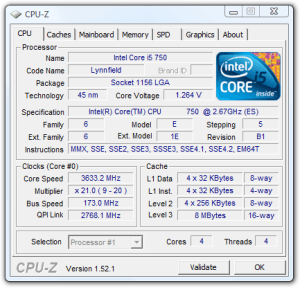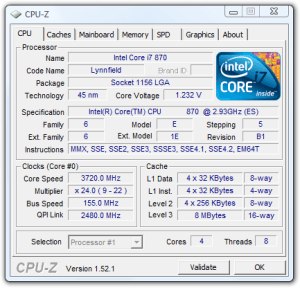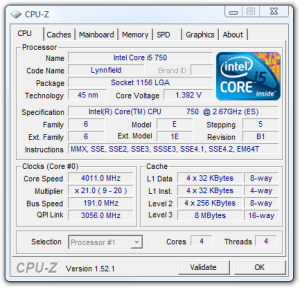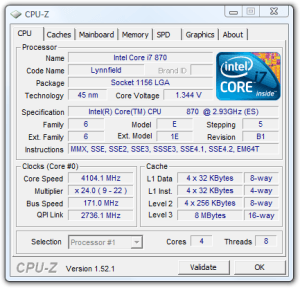- Qualcomm Launches Snapdragon 4 Gen 2 Mobile Platform
- AMD Launches Ryzen PRO 7000 Series Mobile & Desktop Platform
- Intel Launches Sleek Single-Slot Arc Pro A60 Workstation Graphics Card
- NVIDIA Announces Latest Ada Lovelace Additions: GeForce RTX 4060 Ti & RTX 4060
- Maxon Redshift With AMD Radeon GPU Rendering Support Now Available
Gigabyte P55-UD5
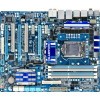
Alongside Intel’s Lynnfield launch, Gigabyte launched close to ten motherboards, one of which we’re taking a look at here. The P55-UD5 is the company’s second-highest offering, and it shows, with its huge feature-set, 12-phase power solution, overclocking-ability, robust BIOS, keen design and more.
Page 9 – Overclocking Gigabyte’s P55-UD5
As I’ve mentioned in past content, I’m not as interested in finding the highest overclock possible as much as I am interested in finding the highest stable overclock. To me, if an overclock crashes the computer after a few minutes of running a stress-test, it has little value except for competition.
How we declare an overclock stable is simple… we stress it as hard as possible for a certain period of time, both with CPU-related tests and also GPU-related, to conclude on what we’ll be confident is 100% stability throughout all possible computing scenarios.
For the sake of CPU stress-testing, we use LinX. Compared to other popular CPU stress-testers, LinX’s tests are far more gruelling, and proof of that is seen by the fact that it manages to heat the CPU up to 20°C hotter than competing applications, like SP2004. Generally, if the CPU survives the first half-hour of this stress, there’s a good chance that it’s mostly stable.
If the CPU stress passes without error, then GPU stress-testing begins, in order to assure a system-wide stable overclock. To test for this, 3DMark Vantage’s Extreme test is used, with the increased resolution of 2560×1600, looped nine times. If this passes, some time is dedicated to real-world game testing, to make sure that gaming is just as stable as it would be if the CPU were at stock. If both these CPU and GPU tests pass without issue, we can confidently declare a stable overclock.
Overclocking with Gigabyte’s P55-UD5
Earlier this month, we posted an article that took a look at overclocking Lynnfield, and this board happened to be the base for all of our results. So, you can say I’ve had a fair amount of experience with overclocking on the board, and this section as a result is pretty easy to write. Normally, I’ll stick to one CPU for benchmarking, but thanks to that article, I tried OC’ing with both the Core i5-750 and Core i7-870.
Please note that while Intel’s stock CPU cooler was used for our stock-clocked performance testing, we used Thermalright’s MUX-120 for all of our overclocking tests. However, the first two overclocks below are stable with the stock cooler using LinX, although temperatures got a wee bit too high.
From an absolutely stable and no voltage increase stand-point, here are the results across the two processors:
That’s right. 3.63GHz stable on the i7-750 and 3.72GHz on the i7-870. I should stress, these are 100% stable, throughout absolutely anything you can do on your PC. There was nothing we could do to thwart the stability, so I’d have to say that both the combination of Intel’s very overclocking-friendly new CPUs and Gigabyte’s robust UD5 make for simple, yet effective overclocking.
How about shaking things up with some extra voltage?
With each CPU bumped up to 1.40v, and the Bus voltage bumped to 1.30v for the i5-750 and 1.40v for the i7-870, we were able to hit just over 4.0GHz on each… stable. I certainly don’t recommend pumping more than the recommended voltage into your processor, but if you do, stability awaits!
Support our efforts! With ad revenue at an all-time low for written websites, we're relying more than ever on reader support to help us continue putting so much effort into this type of content. You can support us by becoming a Patron, or by using our Amazon shopping affiliate links listed through our articles. Thanks for your support!




